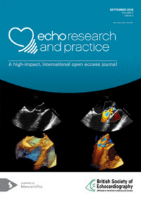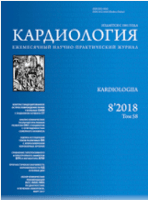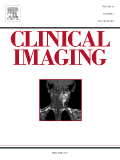
Echo Research and Practice
Scope & Guideline
Bridging Theory and Practice in Patient Care
Introduction
Aims and Scopes
- Echocardiographic Techniques and Innovations:
The journal emphasizes the development and application of novel echocardiographic techniques, including strain imaging, three-dimensional echocardiography, and machine learning models, aimed at improving diagnostic accuracy and patient outcomes. - Clinical Applications of Echocardiography:
Research articles often explore the clinical implications of echocardiographic findings in various populations, including athletes, patients with cardiac conditions, and those undergoing surgical procedures, reinforcing the role of echocardiography in clinical decision-making. - Guidelines and Consensus Statements:
The journal publishes important guidelines and consensus statements from leading societies, such as the British Society of Echocardiography, providing standardized recommendations for practitioners regarding echocardiographic assessments and management. - Impact of Comorbidities on Cardiac Function:
There is a consistent focus on the assessment of cardiac function in the context of comorbid conditions, such as COVID-19, cancer, and pregnancy, highlighting the interplay between systemic health and cardiac performance. - Outcomes Research in Cardiac Interventions:
The journal includes studies evaluating the outcomes of various cardiac interventions, including valve surgeries and transcatheter aortic valve implantation, contributing to the understanding of long-term patient management.
Trending and Emerging
- Machine Learning and Artificial Intelligence in Echocardiography:
The integration of machine learning and artificial intelligence into echocardiographic assessments is gaining traction, with studies validating models for estimating left ventricular ejection fraction and enhancing diagnostic capabilities. - Cardiac Imaging in Athletes:
There is a growing focus on the unique cardiac adaptations in athletes, including studies on the athlete's heart and the implications of cardiac anomalies in sports, reflecting the importance of tailored assessments in this population. - Impact of COVID-19 on Cardiac Function:
Research exploring the effects of COVID-19 on cardiac function, particularly in critically ill patients, has surged, demonstrating the pandemic's influence on cardiovascular health and the need for specialized echocardiographic evaluation. - Guidelines for Specific Patient Populations:
The publication of tailored guidelines for specific patient groups, such as pregnant women and cancer patients, is on the rise, emphasizing the need for specialized echocardiographic practices in diverse clinical contexts. - Innovations in Echocardiographic Protocols:
There is an increasing emphasis on the development of efficient and practical echocardiographic protocols, aimed at improving the speed and accuracy of echocardiographic assessments in various clinical settings.
Declining or Waning
- Basic Science Research in Echocardiography:
There has been a noticeable decrease in basic science studies focusing solely on the physiological mechanisms of echocardiography, as the journal shifts towards more clinically applicable research. - Traditional Echocardiographic Techniques:
With the rise of advanced imaging techniques and machine learning applications, traditional echocardiographic methods, such as standard two-dimensional imaging, are receiving less emphasis in favor of more innovative approaches. - Echocardiography in Non-Cardiac Conditions:
Research exploring the use of echocardiography in non-cardiac conditions appears to be waning, as the journal increasingly concentrates on cardiac-specific assessments and outcomes. - Longitudinal Studies without Immediate Clinical Relevance:
Longitudinal studies that do not address immediate clinical applications or outcomes are less frequently published, reflecting a trend towards research that has direct implications for practice. - Historical Reviews of Echocardiographic Techniques:
There seems to be a decline in the publication of historical reviews or retrospective analyses of echocardiographic techniques, as the focus shifts towards contemporary applications and future directions.
Similar Journals

KARDIOLOGIYA
Bridging Research and Practice in CardiologyKARDIOLOGIYA is a renowned academic journal in the field of cardiology, published by the Russian Heart Failure Society. Since its inception in 1961, this journal has been dedicated to disseminating cutting-edge research in cardiovascular medicine, contributing to the global understanding of heart-related diseases and their management. With a significant publication history that spans over six decades, KARDIOLOGIYA provides a platform for both established researchers and emerging scholars to publish their findings. Despite its current Q4 category ranking in the 2023 Cardiology and Cardiovascular Medicine category, the journal plays a crucial role in promoting regional insights and advancements in cardiology, while striving towards higher visibility and impact within the academic community. While not an open-access journal, the journal is accessible to institutions and professionals in the Russian Federation and beyond, fostering collaboration and knowledge sharing among healthcare professionals. With a Scopus rank of #259 among 387 journals, it is well-positioned to enhance discourse in the field and support the development of innovative approaches to cardiovascular care.

Clinical Imaging
Transforming Imaging Science for Clinical ExcellenceClinical Imaging, published by Elsevier Science Inc, is a renowned journal dedicated to the field of radiology, nuclear medicine, and imaging. With an ISSN of 0899-7071 and an E-ISSN of 1873-4499, this esteemed publication has established its significance in advancing imaging science since its inception in 1989 and continues to make impactful contributions to the discipline through 2024. The journal holds a prestigious Q2 ranking in the category of Radiology, Nuclear Medicine, and Imaging, reflecting its critical role in bridging research and clinical practice. Currently ranked #113 out of 333 by Scopus, with a notable 66th percentile, it offers a platform for disseminating high-quality research, reviews, and case studies that inspire innovation and enhance imaging techniques. Although it primarily functions as a subscription-based journal, it remains dedicated to accessibility and the dissemination of pivotal findings that inform both academia and clinical settings. Clinical Imaging is essential for researchers, professionals, and students alike, offering insights that shape the future of diagnostic imaging.

Cardiovascular Ultrasound
Revolutionizing patient care with open-access ultrasound insights.Cardiovascular Ultrasound, published by BMC, is a leading open-access journal dedicated to advancing the field of cardiovascular imaging through ultrasound techniques. Since its inception in 2003, this esteemed journal has provided a platform for high-quality research and innovative methodologies, contributing significantly to both cardiology and radiology. With an impressive impact in the academic community, it consistently ranks in the Q2 category for Cardiology and Cardiovascular Medicine, as well as in Medicine (Miscellaneous) and Radiology, Nuclear Medicine, and Imaging, as per the 2023 metrics. The journal aims to disseminate critical knowledge that enhances diagnostic practices, patient care, and clinical outcomes, making it an essential resource for researchers, clinicians, and students. Emphasizing the importance of accessible knowledge, Cardiovascular Ultrasound ensures that all published articles are freely available, fostering collaboration and innovation across the global community of cardiovascular professionals.

INTERNATIONAL JOURNAL OF CARDIOVASCULAR IMAGING
Innovating Insights for Heart HealthINTERNATIONAL JOURNAL OF CARDIOVASCULAR IMAGING, published by Springer, is a prestigious platform dedicated to the interdisciplinary field of cardiovascular medicine and imaging. With an ISSN of 1569-5794 and E-ISSN 1875-8312, the journal is recognized in both Cardiology and Cardiovascular Medicine (Rank #154/387, Q2 Category) and Radiology, Nuclear Medicine and Imaging (Rank #137/333, Q2 Category) disciplines, reflecting its significant impact within the scientific community. Established in 1988 and continuing to the present, it provides a rigorous forum for cutting-edge research, reviews, and clinical insights that are essential for advancing knowledge in cardiovascular diagnostics and therapeutic imaging. The journal's dual access options cater to both traditional and open-access readership, ensuring wide dissemination of its findings. In an era where cardiovascular diseases pose a significant public health challenge, the INTERNATIONAL JOURNAL OF CARDIOVASCULAR IMAGING stands out as an essential resource for researchers, healthcare professionals, and scholars aiming to innovate and improve patient outcomes through imaging technology.

HEART FAILURE REVIEWS
Innovating Cardiovascular Insights for Better HealthHEART FAILURE REVIEWS is a premier academic journal published by Springer, dedicated to the dynamic field of cardiology and cardiovascular medicine. With an impressive Q1 ranking in 2023, the journal stands as a vital resource for researchers, clinicians, and students seeking to stay abreast of the latest developments in heart failure management and research. Covering a broad spectrum of topics, including innovative therapies, epidemiology, and pathophysiology of heart failure, it fosters an environment for interdisciplinary collaboration. The journal is indexed with an ISSN of 1382-4147 and an E-ISSN of 1573-7322, ensuring widespread dissemination of knowledge. Although it does not currently offer open access options, its rigorous peer-review process guarantees high-quality content that contributes significantly to the scientific community. Established in 1996 and running through 2024, HEART FAILURE REVIEWS continues to be a leading platform for advancing understanding and treatment of heart conditions, making it an indispensable resource for all stakeholders in cardiac health.

Kardiologie
Exploring New Frontiers in Cardiovascular Medicine.Kardiologie is an emerging journal dedicated to advancing the field of cardiology and cardiovascular medicine, published by SPRINGER HEIDELBERG in Germany. Established with the first issue in 2022, this journal provides a valuable platform for the dissemination of innovative research, clinical studies, and review articles that contribute to both theoretical knowledge and practical applications in cardiology. While the journal currently holds a Q4 category ranking in the field and occupies a percentile of 24 according to Scopus, it aims to enhance its impact factor by attracting high-quality submissions from researchers and clinicians alike. Kardiologie is particularly focused on bridging the gap between cutting-edge research and clinical practice, ensuring that the latest scientific findings are readily accessible to practitioners. Though it operates under traditional access options at present, the journal aspires to broaden its accessibility and reach in future editions, making it a pertinent choice for anyone interested in the evolving landscape of cardiovascular health.

Current Cardiology Reports
Leading the way in cardiovascular medicine and clinical excellence.Current Cardiology Reports, published by Springer, is a leading peer-reviewed journal dedicated to advancing the field of cardiology and cardiovascular medicine. With its ISSN 1523-3782 and E-ISSN 1534-3170, the journal offers a platform for researchers and practitioners to share innovative research findings, clinical insights, and comprehensive reviews, contributing to the ongoing dialogue in cardiovascular health. Recognized for its high impact, Current Cardiology Reports holds a prestigious Q1 ranking in the Cardiology category for 2023 and ranks #83 out of 387 in Scopus, placing it in the 78th percentile among journals in its field. The journal, converging its insights from 1999 to 2024, aims to disseminate valuable knowledge that can inform clinical practice and influence future research directions. Although not an Open Access journal, the rich content and timely articles published within its pages are invaluable to both seasoned professionals and emerging scholars in cardiology. Based in New York, United States, the journal continues to play a critical role in shaping cardiovascular medicine through rigorous scientific inquiry and education.

ARYA Atherosclerosis
Bridging gaps in atherosclerosis research for global impact.ARYA Atherosclerosis is a distinguished open-access journal published by Isfahan University of Medical Sciences and the Isfahan Cardiovascular Research Center, with an ISSN of 1735-3955 and an E-ISSN of 2251-6638. Founded in 2005, this journal seeks to advance the field of cardiology and cardiovascular medicine by providing a platform for researchers, healthcare professionals, and scholars to disseminate groundbreaking findings related to atherosclerosis and its implications for cardiovascular health. Although currently ranked in Q4 of its category in 2023, ARYA Atherosclerosis plays a vital role in the academic community by promoting open access to vital research, fostering collaboration, and encouraging the sharing of knowledge. The journal's commitment to transparency and accessibility makes it an essential resource for those looking to stay informed about the latest developments in cardiovascular research. Based in Iran, it is positioned within an emerging research landscape that is increasingly contributing to global health discussions.

Heart Views
Advancing cardiovascular knowledge for a healthier tomorrow.Heart Views is a prestigious and influential journal dedicated to the field of cardiology and cardiovascular medicine, published by Wolters Kluwer Medknow Publications. With an Open Access model implemented since 2010, the journal ensures that its valuable research findings are accessible to a global audience, fostering knowledge dissemination and collaboration among researchers, professionals, and students alike. While the current impact factor is not specified, its commitment to quality and peer-reviewed content has established it as a significant resource within the cardiology community. The journal publishes a diverse array of articles, including original research, reviews, and clinical studies aimed at advancing the understanding and treatment of cardiovascular diseases. Heart Views serves as an essential platform for sharing innovative ideas and practices, thereby contributing to improved patient care and outcomes in the dynamic field of heart health.

Journal of Echocardiography
Advancing the Frontiers of Cardiac ImagingThe Journal of Echocardiography, published by SPRINGER JAPAN KK, is a leading periodical dedicated to advancing the field of echocardiography and cardiac imaging. With an ISSN of 1349-0222 and an E-ISSN of 1880-344X, this journal serves as a vital resource for researchers, clinicians, and students alike, providing a platform for the dissemination of innovative research, case studies, and reviews focused on the latest echocardiographic techniques and applications. Operating under a prestigious publisher with a noteworthy reputation in the academic community, the journal features contributions that significantly impact the current understanding of cardiac health, making it essential reading for those in the fields of medicine, radiology, and imaging. As recognized in the 2023 Category Quartiles, it holds a solid Q3 ranking within the Radiology, Nuclear Medicine and Imaging category, further highlighting its relevance within the field, where it ranks #170 out of 333 according to Scopus. With coverage spanning from 2003 to 2024, the Journal of Echocardiography is committed to fostering an inclusive and comprehensive dialogue on the developments that shape modern echocardiographic practice.